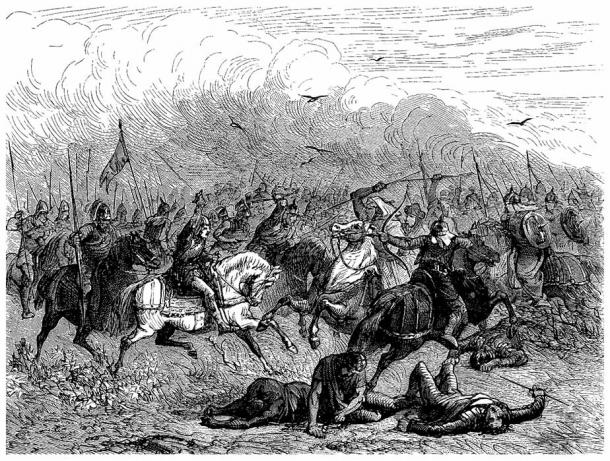
The Forgotten Arab Raid On Rome In 846 AD
Throughout its millennia long existence, the illustrious city of Rome has been invaded many times, and changed hands just as frequently. The Gauls, Goths, Vandals, and Normans have all been responsible at one time or another for despoiling the crown jewel of Italy, each one a disaster of such magnitude that even today they are still remembered. Remaining virtually unknown however, is the Arab raid of 846 AD, which although not as ruinous as the others, still left an indelible mark on the citizens that survived it. Curiously and in stark contrast to the other examples, in this case the Islamic aggressors chose to ignore Rome entirely, opting instead to ravage the Italian cities of the Mediterranean basin.

Drawing and graphic reconstruction of the Constantinian basilica over the grave of St. Peter in Rome (1450) (Public Domain)
Their unusual choice was dictated by the principles of a military strategy that only the Arabs could fully understand and properly execute. Performing the medieval Islamic equivalent of a blitzkrieg, they used the doctrine of ghazw warfare to terrorize Italian provinces — burning, killing, and looting their way towards the churches of Saint Peter and Saint Paul, which they robbed of all their priceless treasures. It was a chain of events that was to sharply illuminate Rome’s weaknesses, compelling it to initiate a policy that would ultimately strengthen its ability to repel repeat incursions.

Medieval Christian-Muslim battle scene. ( Erica Guilane-Nachez / Adobe Stock)
Early Medieval Muslim Conquests
After the death of Prophet Mohammed in 632, Muslims started to expand rapidly to the east and west, ushering in a long period of Islamic conquest that was to transform the medieval world forever. By 638, Muslims controlled most of the Byzantine regions in the Middle East, and by 695 Egypt, Tunisia, and Carthage were taken and local Berber tribes converted to Islam.
After consolidating their hold in North Africa, the Muslims next struck Catholic Spain, slaughtering its Visigoth rulers up to the Pyrenes Mountains between 711 and 720. After this they slowed down considerably, with drawn-out engagements being replaced by shorter raids into the European interior. Consequently, trespasses into Sardinia, Sicily, and Corsica started to become increasingly common by the first half of the ninth century, at the same time as Muslims based in Andalusia, in Spain, also ramped up attacks on the southern frontiers of the Frankish kingdom.
Like this Preview and want to read on? You can! JOIN US THERE ( with easy, instant access ) and see what you’re missing!! All Premium articles are available in full, with immediate access.
For the price of a cup of coffee, you get this and all the other great benefits at Ancient Origins Premium. And - each time you support AO Premium, you support independent thought and writing.
Jake Leigh-Howarth holds a masters degree in Modern History from the University of Leeds, where he specialized in the travelogues of Western visitors to Soviet Central Asia. His favorite historical periods include the Tamerlane Empire, the Mongolian Empire, and the Eleusinian Mysteries of Ancient Greece.
Top Image: Raphael - The Battle of Ostia (1514) (Public Domain)















